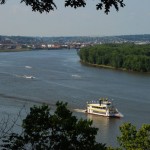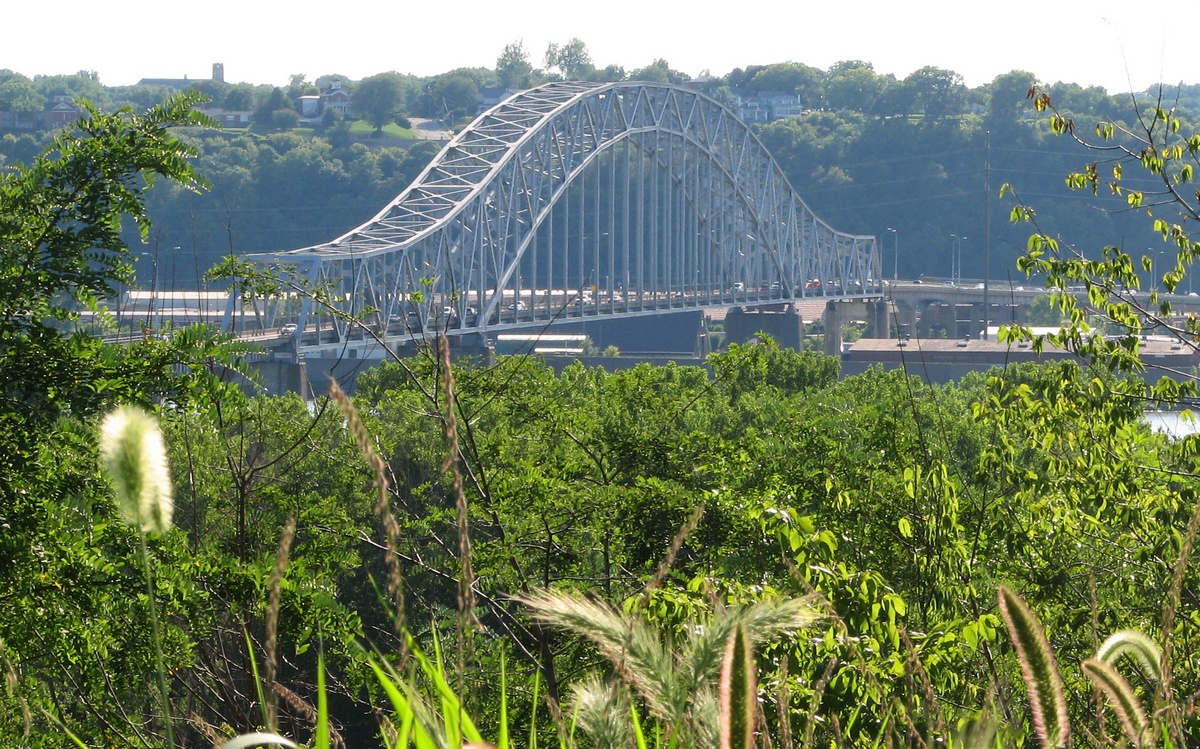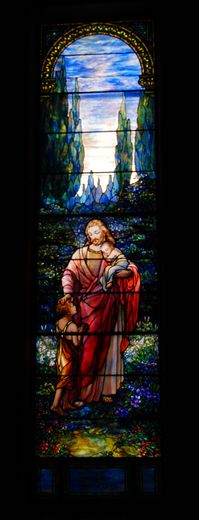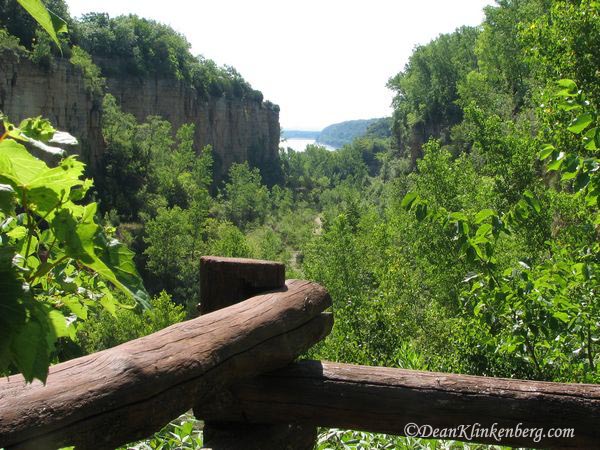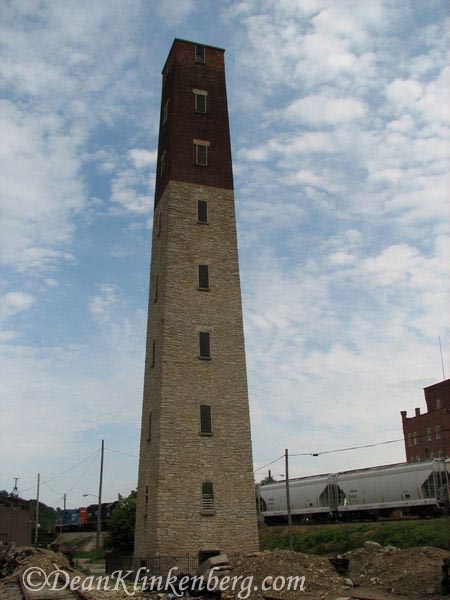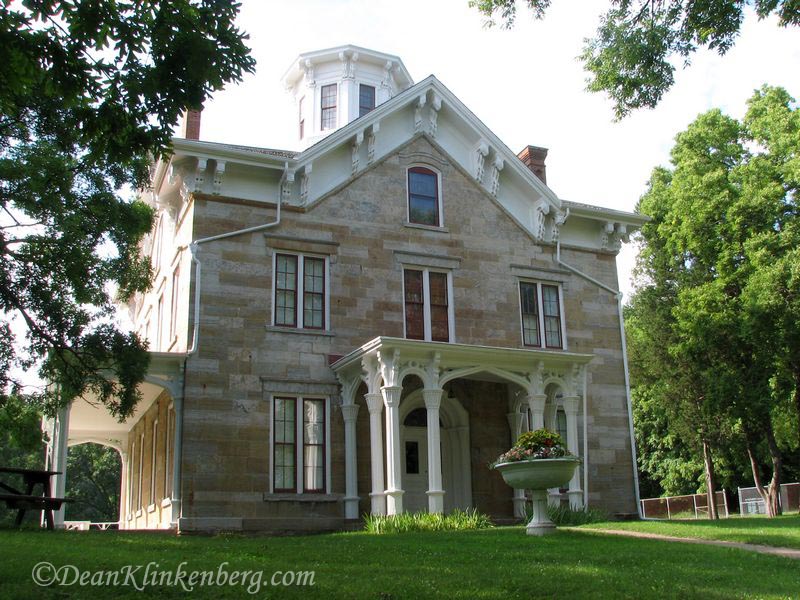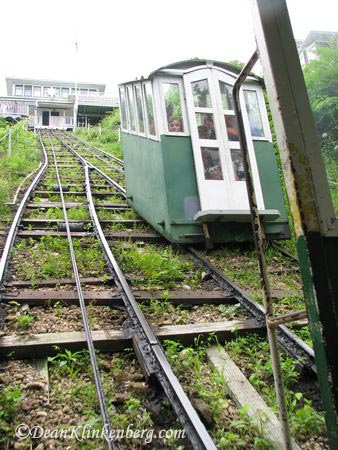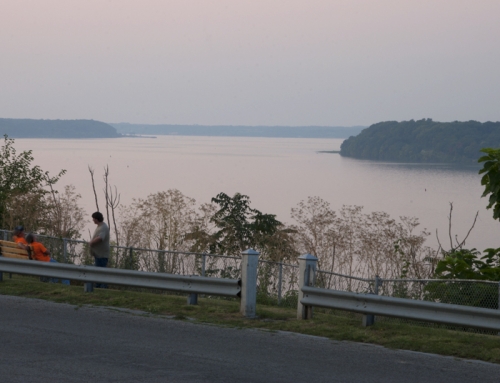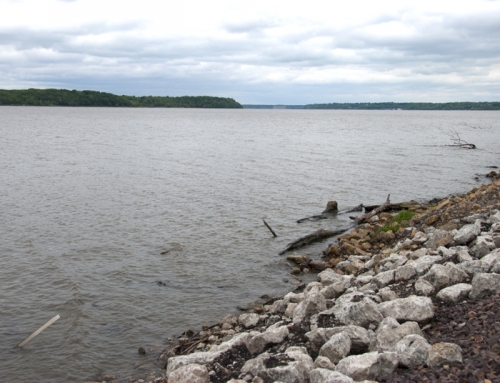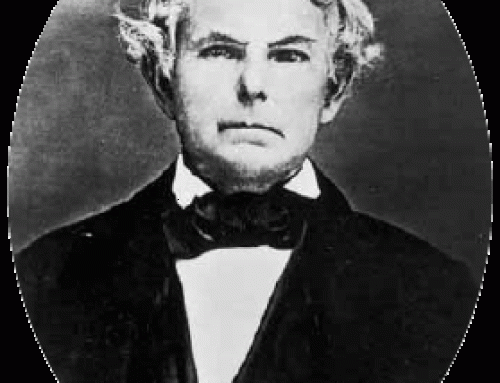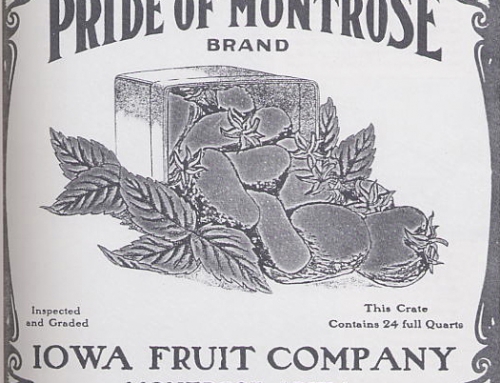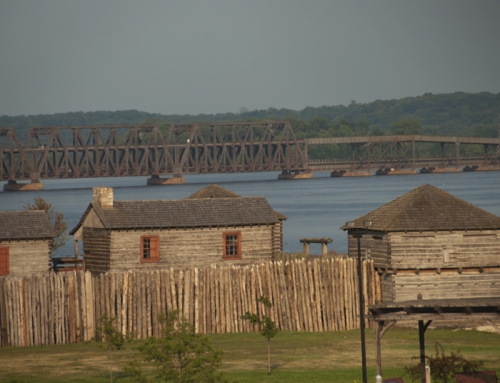Introduction
Dubuque is an exciting place to visit these days, as the historic core fills back in with residents and small businesses. There’s a lot of energy in this old city, enough to entice visitors back time and again.
Visitor Information
The Dubuque Welcome Center is located in the Lower Main historic district (280 Main St.; 800.798.8844).
History
In the early 1700s, Pierre-Charles Le Sueur noted the locations of lead mines in the area, but it was nearly a century later when Julien Dubuque rode into town and negotiated exclusive mining rights on Meskwaki Indian lands west of the river.
After Dubuque died in 1810, the Mesquakie, concerned about losing their lead mines to the Americans (their territory was still off-limits), continued to mine and smelt the lead themselves. At the same time, lead mining on the east side of the river was growing rapidly and thousands of white settlers were crossing the river illegally. They were forced out by federal troops, but by 1832, the Mesquakie were forced to abandon the mines because of continuing hostilities with nearby Dakota Indians. A short time later, the Mesquakie lost ownership of the mines permanently as part of the settlement of the Black Hawk War.
Within a short time, mining camps sprung up along the west side of the Mississippi River. The area that became known as Dubuque’s Mines evolved into the town of Dubuque in 1834. While lead mining was good business, it was never as prosperous as in neighboring areas. Good agricultural prospects lured many miners into farming; some miners left in the California Gold Rush; some mines were plagued by high water levels that prevented extracting the ore. Lead mining’s mercurial history was essentially finished in Dubuque by the 1850s.
Early settlers moved into a territory with no official government and settled on land for which title was uncertain. One document described Dubuque as a lawless territory of “dram shops where armed men congregated to drink and fight.”
George Harrison (of Galena, not Liverpool, UK) tried to get a head start on the town creation process by laying out a few lots in 1833, but the first official plat did not happen until 1837. By the 1840s, Dubuque was transforming from a rough-and-tumble mining camp into a civilized town, more or less. Log cabins were replaced by stone and brick buildings; streets were created; and local industry expanded beyond mining.
In the 1840s locals adopted the nickname of “Key City” because of Dubuque’s role in expanding settlement across Iowa and points west. In the 1850s Dubuque’s population, fueled by the arrival of immigrants from Ireland and Germany, grew from 3,108 to 14,319. Wealthier residents built houses on the bluff; downtown was populated with hotels that were often full of single men and a few families looking for temporary housing on their way elsewhere. Steamboats propelled further growth, and Dubuque remained Iowa’s largest city until 1875.
During the Civil War, a substantial number of Dubuquers had pro-Southern leanings, even though only a very small percentage of its population had ties to the South. Its Democratic politics were largely anti-Catholic and anti-foreigner, influenced by the Know Nothing movement. In the 1860 presidential election, Dubuque city went for Stephen A. Douglas, the Illinois senator who was certainly no abolitionist. Nevertheless, Dubuque contributed a substantial number of volunteers to the Union Army.
Although railroad construction was booming on the east side of the Mississippi River (the railroads reached Dunleith, now known as East Dubuque, in 1855), a few unsuccessful attempts were made to build railroads from Dubuque to the west. It wasn’t until after the Civil War that railroad construction took off in earnest. An important link was completed in 1869 when Dubuque’s first railroad bridge across the Mississippi River opened.
Even though railroads were replacing steamboats, river traffic did not fade away. In 1874, Diamond Jo Reynolds moved his headquarters to Dubuque and built a shipyard at Eagle Point; it operated successfully until the early 1900s. Another boatyard opened at Ice Harbor that became the Dubuque Boat and Boiler Works; they built iron-hulled boats until closing in 1972.
Dubuque’s expansion through the late nineteenth and early twentieth century—between 1870 and 1900 Dubuque’s population doubled—was due mostly to manufacturing, particularly lumber and woodworking, brewing, and meat packing. One of the best-known manufacturers was the Cooper Wagon Works, which began in the 1860s and was nationally renowned for its exceptionally solid wagons. Even as Dubuque’s population grew, the city didn’t see the waves of immigrants in the early 1900s that other American cities saw. By 1915, only one of eight Dubuquers was foreign born.
The city’s culture was heavily influenced by Germans and therefore stung deeply by the rise in anti-German sentiment with World War I. In May 1918, Iowa Governor Harding issued the infamous “Babel Proclamation” that prohibited the speaking of foreign languages in public—including on the telephone, at church, and at school. Even after World War I, anti-foreigner sentiment continued to increase in Dubuque and the Ku Klux Klan gained a foothold. Dubuquers may have been crankier than the rest of the nation in the 1920s, because the economic boom that the United States experienced largely bypassed them. They also suffered greater hardship during the Great Depression than the country as a whole. The local economy received a boost from Roosevelt’s public works projects; two in particular had a lasting impact: the building of Lock and Dam #11 and the reshaping of Eagle Point Park.
With the end of World War II, Dubuque finally got some good economic news: the Dubuque Packing Company had a new owner and began a robust expansion, and the John Deere Company built a massive factory at Peru Bottoms. The record flood of 1965 gave the impetus to build a flood wall. Completed in 1973, the new wall was built for a 30-foot crest and opened the flood plains to new development.
Dubuque fell victim to the misguided urban renewal philosophies of the 1970s and 1980s and leveled large sections of old neighborhoods as new development (and housing) pushed west; as in many other places, the anticipated new development never really materialized. Gradually, historic preservation took root in the 1980s and beyond. Like many old industrial towns, the 1980s were tough in Dubuque. The recession resulted in big-time job losses, strikes, and a steep decline in union jobs; the city never regained those manufacturing jobs.
Renovation of historic properties is in full swing today. Older parts of town like the Historic Millwork District are coming back to life as complete neighborhoods, and the city has embraced the idea of going green with new construction and renovation. It’s possible that Dubuque has never looked better. Still, the city remains something of an enigma. How do you get your head around a place that has elected as mayors an avid Harley rider known as “Poor Boy” and a nun?
Exploring the Area
North Dubuque
Mathias Ham was an early lead miner in the region—too early, in fact. His first attempt to make money involved organizing a group of 50 miners and taking them, illegally, across the Mississippi into Indian lands. They were eventually forced out by federal troops. After the Black Hawk War, mining opened up and Mathias Ham moved in, legally, and got rich. Over the years, however, he lost most of his money on unsuccessful business ventures, such as the failed town of Eagle Point. When he died, his mansion was his last remaining asset. That house is now the Mathias Ham House Historic Site (2241 Lincoln Ave.; 563.557.9545). Constructed of native limestone, the house looks solid and imposing from the outside but the interior has an understated elegance. Docents in period costume will guide you around the house after a ten-minute video narrated by local celebrity Kate Mulgrew of Star Trek: Voyager fame. The house is stocked with period furnishings (but few are original to the house), and the guides do a fine job of explaining their functions.
Just around the corner from the Ham House, Eagle Point Park (2601 Shiras Ave.; 563.589.4238) was created in 1909 and underwent considerable renovation during the Depression thanks to a grant from the Works Progress Administration. If the buildings remind you of Frank Lloyd Wright, it is because the superintendent who designed them, Alfred Caldwell, was a big fan of Wright’s Prairie School. Besides the impressive buildings, the park has great views of the river and Lock and Dam #11 and no shortage of places to picnic. The park is open to auto traffic from May through October. The rest of the year, take Shiras Avenue up the hill to Eagle Point Drive and follow it around the top of the bluff to a parking lot, then walk into the park.
Lock and Dam #11 (11 Lime St.; 563.582.1204) has a viewing platform where you can watch boats locking through.
Port of Dubuque
The Port of Dubuque, also known as Ice Harbor, has undergone a substantial makeover in recent years. It has several places you might wish to pass the time. Parking is free and plentiful.
The National Mississippi River Museum & Aquarium (350 E. 3rd St.; 563.557.9545), an affiliate of the Smithsonian Institute, is one of the best museums along the Mississippi River. Indoor exhibits include displays of aquatic life native to Mississippi River environments (check out the unreal fish in the Main Channel display—sturgeon, blue catfish, paddlefish, and don’t even get me started on the alligator gar), a cool flyover perspective of the Mississippi River from the headwaters to the delta, the history of river navigation, two theaters, and a collection of river-related art. Upstairs, you can virtually pilot a tow (using a computer simulation) and visit the National Rivers Hall of Fame. If that’s not enough, step outside and tour the William Black, an old dredge that also doubles as a bed-and-breakfast, and a wetland ecosystem.
The Grand Harbor Resort (350 Bell; 563.690.4000) has an indoor waterpark, plus restaurants and hotel rooms.
On the other side of the railroad trestle from the winery is the Old Shot Tower (Riverfront between E. 4th and E. 6th Streets), built in 1856, it is one of the few remaining structures that was used to manufacture lead shot. Molten lead was hauled to the top and poured through a series of screens that shaped the lead into pellets; a water bath at the bottom cooled and hardened them.
Downtown
Lower Main Street is the heart of the original (1833) commercial district. Reborn in recent years, Lower Main has several sites to explore, plus good shopping and eating.
The Town Clock originally sat atop the John Bell and Company store in the 1860s; it was hailed as the most accurate town clock in America. In 1971, the 13-ton clock was placed on a pedestal and surrounded by a plaza; it’s a popular place for events in the summer.
The standout Dubuque County Courthouse (720 Central Ave.) is a masterful, if over-the-top, Beaux Arts building designed by Fridolin Heer. Completed in 1891, the building was constructed with gray Indiana limestone, red brick, and terra cotta; the exterior is marked by intricate brick work, steeples, Grecian pediments, statues, and a 190-foot-tall tower with a 14-foot bronze statue of Justice atop it. The gilt dome is a recent addition, completed in the 1980s.
The Main Post Office (350 West 6th St., 563.582.3674) features two Depression-era murals by Bertrand Adams and William Bunn, both of whom were influenced by Iowa native son Grant Wood.
Downtown has several beautiful historic churches. Many are locked when services are not being held, so call in advance if you want to tour the inside. If you only have time to visit one church, head to St. Luke’s United Methodist Church (1199 Main St.; 563.582.4543). Founded in 1833, it is home to the oldest congregation in Iowa. The current Romanesque church was completed in 1897 and is an exquisite, beautiful, sublime, stunning temple to God that is home to dozens of Tiffany art glass windows, including five large and resplendent ones. You can borrow a guidebook from the office. The church is open to visitors Monday through Thursday (9a-4p).
On the other side of downtown, the Gothic Revival Cathedral of St. Raphael and St. Patrick Church (231 Bluff St.; 563.582.7646) was built between 1852 and 1859. The interior has frescoes created by Luigi Gregori and art glass windows imported from London in 1889. The basement has a solemn Italian marble-lined mortuary chapel, built in 1903, that was off-limits to the public until 1997. The church is usually locked but you can ring the bell at the cathedral office during normal business hours to tour the interior.
St. Mary Catholic Church (1584 White St.; 563.582.5469) was completed in 1867 for a predominantly German parish. Designed by John Mullany, an architect with a specialty in gothic revival design who also designed the Cathedral of St. Raphael, the large—and tall—structure is distinguished by a 252-foot steeple that was modeled after Salisbury Cathedral in England. Many of the art glass windows are the creation of Bavarian artist F.X. Zetteler; they were shipped from Munich in 1912, just ahead of the violence that triggered World War I. The windows depict key events in the life of Mary, beginning with her birth (west side window at the front) and ending with her death (east side window at the front). The mural of the Assumption behind the altar was painted by Matilda Brielmaier in 1912. The mural, 35 feet tall, was painted on three pieces of canvas in the artist’s studio, installed in the church, and finished. The Altar of St. Mary (west side aisle) was installed in 1928; it is made of Italian Carrara marble and is decorated with a mosaic of Mary and houses the relics of four saints, including St. Anthony and St. Francis. The church closed in 2010 and is now an events center called Steeple Square. Call ahead to arrange a visit (563.235.3584).
Saint John’s Episcopal Church (1410 Main St.; 563.556.0252) was founded in 1836; the current English Gothic building was finished in 1882. The limestone exterior is set off by doors painted a deep red—symbols of the blood of early Christian martyrs and Christ. The striking interior is rich in detail: a vaulted ceiling built to resemble the hull of a ship, five Tiffany windows, and a Baptismal font from 1851.
Another old congregation, the First Congregational United Church of Christ (255 W. 10th St.; 563.582.3648) dates to 1839 but the current building was dedicated in 1860, making it one of the oldest existing churches in Dubuque. When news of Lee’s surrender reached Dubuque in 1865, the church bell was rung so vigorously that it cracked. The bell was not replaced until 1886. The sanctuary is spacious and adorned with elaborate but warm woodwork, a Tiffany window, and an impressive organ behind the altar. The organ was installed in 1869, its trip from the manufacturer in Massachusetts completed with a tricky journey across the iced-over Mississippi River. The organ is still being used.
- See pictures from Dubuque’s historic churches here.
The Fenelon Place Elevator (4th St. at the bluff; 563.582.6496) was originally built for the personal use of J.K. Graves in 1882, who wanted an easier way to get to his home on top of the hill. It was rebuilt after a fire in 1883 and then opened to the public as the Fourth Street Elevator. In the past 120 years, the only major overhaul was in 1977 when the cars were replaced. It’s a very fun and unique ride with expansive views of Dubuque from the top.
South Dubuque
Crystal Lake Cave (6684 Crystal Lake Cave Rd.; 563.556.6451) is a good starter cave, if you’ve never been in one before. The cave has a good variety of formations for its modest size.
Our Lady of the Mississippi Abbey (8400 Abbey Hill Lane; 563.582.2595) is home for a group of Cistercian nuns living a contemplative life. They host prayer services at noon and vespers at 5pm; the public is welcome to attend. The nuns have a small organic farm and pay their expenses by producing and selling Trappistine Creamy Caramels. The Abbey is about six miles south of Dubuque. The gift shop is open 11am-3pm on Monday, Thursday, and Friday. If you are interested in a quiet retreat, they offer a few different options for singles or small groups; what you pay is up to you.
West Dubuque
The Dubuque Arboretum (3800 Arboretum Dr.; 563.556.2100), located in Marshall Park on the city’s northwest side, may be a bit out of the way, but you should go, anyway. The Arboretum is divided into several theme beds such as Japanese, English, sun-loving perennials, and the 900-species hosta bed.
Parks Along the Mississippi River
Just downriver of Lock & Dam #11, A.Y. McDonald Park (Hawthorn St.; 563.589.4238), home of the Catfish Festival, has a paved walking path next to the river and picnic tables; it is also an excellent viewing spot for bald eagles in the winter.
Miller-Riverview Park (2 Admiral Sheehy Dr.; 563.589.4238) is situated next to the Mississippi River and the greyhound race track on Hamm Island. It has a Vietnam War Memorial, good views of the river, and a few spots for a picnic, but it is primarily a campground.
There’s a walking path atop the levee at the Port of Dubuque that is lined with interpretive markers and good views.
Sports & Recreation
Swiss Valley Nature Preserve (Swiss Valley Rd.; 563.556.6745) has a number of places to hike in its 500 acres of wilderness, plus trout fishing, and an interpretive center. Practically next door, Swiss Valley Park (563.556.6745) offers more hiking trails, picnicking, and a campground. To get there, go 8 miles west of downtown on US 20 to Swiss Valley Road; head south to reach the preserve and park.
Sundown Mountain Resort (16991 Asbury Rd.; 563.556.6676) will help you pass the time on a cold winter’s day, with skiing from late November until mid-March; it has six lifts and 20 trails down a 475-foot slope.
Mines of Spain Recreation Area (563.556.0620) is another outstanding park along the Mississippi River. The park includes the Julien Dubuque Monument, the dramatic bluff-top location where the city’s namesake was buried in 1810. The park has several miles of hiking trails; the ¾-mile hike around Horseshoe Bluff is a fairly easy and quick hike. Also within the park boundaries is the E.B. Lyons Interpretive Center (563.556.0620), which houses exhibits on wildlife native to the area.
Culture & Arts
The Dubuque Museum of Art (701 Locust St.; 563.557.1851) has a few Grant Wood paintings on permanent display but otherwise uses its space to host rotating exhibits.
River Lights Bookstore 2nd Edition (1098 Main St.; 563.556.4391) is an independent bookstore with a good selection of books and excellent service.
Check the schedule at the Five Flags Center (405 Main St.; 563.589.4254) for concerts and performing arts.
Getting on the River
American Lady Yacht Cruises (1630 E. 16th St.; 563.557.9700) sails the Mississippi on a modern yacht, offering daily sightseeing cruise (with an option to add lunch), plus happy hour and dinner cruises.
Tours
If you’re into seeing how things get built, take a tour of the John Deere Factory in Dubuque, where they build backhoes, skid loaders, and other big stuff. The 90-minute tour takes you through the manufacturing process. The tour is free, but you must submit a tour request through an online form.
Entertainment and Events
The Q Casino (1855 Greyhound Park Dr.; 800.373.3647) has over 1,000 slot machines and 16 gaming tables in 30,000 square feet.
The Diamond Jo Casino (301 Bell St.; 563.690.4800) has 36,000 square feet of gaming space with 1000 slot machines and 20 gaming tables. The complex also has a concert venue, the Mississippi Moon Bar (563.690.2100), a 30-lane bowling alley, and several places to eat.
Farmers Market
The main farmers market is next to City Hall (11th to 13th Streets between Central and Main Streets; Sa 7a-noon). In winter, the market moves indoors to the Colts Center (11th and Central Streets; Sa 9-noon).
Festivals
Ice Fest (January; 800.226.3369) at the National Mississippi River Museum is all things ice, including ice carving, ice harvesting demonstrations, snow sculpture, and assorted winter games.
Dubuque Bald Eagle Watch (January; 563.556.4372) celebrates the annual southerly migration of the previously-endangered species. Outdoor viewing events are centered around Lock and Dam #11 and A.Y. McDonald Park. The Grand River Center-Port of Dubuque hosts indoor exhibits.
Dubuque hosts a traditional County Fair (563.588.1999; County Fairgrounds) in July, complete with rides on the midway, funnel cakes, beauty contests for cows, and cotton candy.
Outdoor concerts are the featured event for Music on Main (June–September; 563.588.4400; Clocktower Plaza), held one Friday a month during the summer.
Live Music
If you want to catch some live music, check out what’s going on at The Lift (180 Main St.; 563.584.9712) and Monk’s Kaffee Pub (373 Bluff St.; 563.585.0919).
Smokestack (62 E. 7th St.) is another option, a unique three-story entertainment venue that specializes in live music and art. Bands sometimes perform on the roof of the building.
**Dubuque is covered in Road Tripping Along the Great River Road, Vol. 1 and is also the setting for the second Frank Dodge mystery, Double-Dealing in Dubuque. Click the links above for more. Disclosure: This website may be compensated for linking to other sites or for sales of products we link to.
Where to Eat and Drink
Drinks
The Lift (180 Main St.; 563.584.9712) is a spacious basement pub with an Irish theme in a historic downtown location.
Paul’s Tavern (176 Locust St.; 563.556.9944) is a neighborhood bar with cheap beer and a lively crowd, where you can stare at animal heads behind glass while you drink.
AUTHOR’S PICK: Jubeck New World Brewing (115 W. 11th St.; 775.375.5692) started as a home brewing hobby and evolved into a popular microbrewery. From their home in a historic 19th century storefront, they offer a dozen or more beers on tap (and a cider or two) at any given time. It’s a place tailor made for relaxing and chatting with the people around you. They also serve pizza and sandwiches.
Dimensional Brewing Company (67 Main St.; 563.265.2693) is another good choice for a craft beer and one in a much bigger space. They regularly host live music.
Settle in and sample some wine at Stone Cliff Winery (600 Star Brewery Dr.; 563.583.6100), which is housed in the historic Dubuque Star Brewery building. Enjoy it with live music on weekend nights.
Coffee Shops
Monk’s Kaffee Pub (373 Bluff St.; 563.585.0919) is about as laid-back as a coffee shop can be. The coffee is good, as one would hope, and adult beverages and live music are good reasons to go when you don’t need that caffeine fix.
Wayfarer Coffee (955 Washington St.; 563.583.8338) is a good choice for a cup of coffee or tea in the Millwork District. They also sell pastries, soups, and sandwiches.
★Author’s Choice: Convivium Urban Farm (2811 Jackson; 563.557.2900) is bringing a new vision to the food scene in Dubuque. Greenhouses on site supply some of the raw materials for the menu for breakfast and lunch, and a focus on building community means that this will be a place where you do more than eat and run. You can enjoy a leisurely meal (or coffee) in the spacious and airy main seating area or the outdoor patio.
Dining
Dottie’s Café (504 Central Ave.; 563.556.9617) has a devoted group of locals who love the burgers, but they also do a very good breakfast of diner standards.
In a town with a strong German lineage, one would hope that it is still possible to get traditional German food. It is, thanks to Europa Haus Restaurant & Bier Stube (1301 Rhomberg Ave.; 563.588.0361). Step into the friendly Bavarian-style pub and dine on German staples like sauerbrauten, Wiener schnitzel, and rouladen. They serve dinner Wednesday through Saturday evenings (W 5-7, Th-Sa 5-9), but they also serve lunch Monday through Saturday (11-2).
Dubuque also has a number of excellent choices for fine dining. Mario’s Italian Restaurant (1298 Main St.; 563.556.9424) serves traditional Italian-American fare: panzerotti (which are basically huge dumplings made of pizza dough), calzones, and pizza, sandwiches, and pastas like lasagna, plus meat entrées like veal marsala, steaks, and seafood.
Catfish Charlie’s River Club (1630 E. 16th St.; 563.582.8600) serves well-prepared steaks and seafood in a casual atmosphere next to the marina; some of their fish is sourced directly from the Mississippi River. If the weather is nice, try to snag a table on the deck.
Step back into a more traditional dining experience at the Morocco Supper Club (1413 Rockdale Rd.; 563.582.2947), which has been pleasing folks for over 50 years. Sometimes it’s the little touches that grab your attention, like the spreads (such as braunschweiger) that come with the bread, but they also know how to cook a good steak.
L May Eatery (1072 Main St.; 563.556.0505) serves fresh, handcrafted food using seasonal ingredients. Options generally include gourmet pizza, and steaks, pasta, and fish dishes; the menu changes regularly.
Fine foods made with care from locally-sourced ingredients fill up the menu at Brazen Open Kitchen (955 Washington St.; 563.587.8899); head there for dinner or Sunday brunch. The restaurant is located in a historic brick building in the city’s reinvigorated Millwork District.
Where to Sleep
There are few decent budget options in Dubuque, especially in the summer. If you are looking for “as cheap as possible without camping,” consider staying at a budget motel in East Dubuque or the Wisconsin towns of Sandy Hook and Dickeyville; none of these places are more than a 15-minute drive from downtown Dubuque. Most of the chain motels are located along US 20 (Dodge Street).
Camping
Miller-Riverview RV Park (2 Admiral Sheehy Dr.; 563.589.4238) is on Hamm Island between the Mississippi River and the Greyhound Park; it is a popular site to camp and can feel very cramped when full, which is most summer weekends.
Just south of town, Husemann’s RV Park & Campground (5447 Olde Massey Rd.; 563.582.8656; generally open April to October) is a cozy, no-frills campground (about 33 sites) far enough off the highway to avoid traffic noise; the reasonably priced sites run the gamut from basic to full hookups.
Just a half-mile further down Massey Station Road, Massey Marina Park (9500 Massey Station Rd.; 563.556.6745) is in a shady, secluded area south of Dubuque next to the Mississippi River backwaters. Most of the sites have electricity.
Swiss Valley Park (Swiss Valley Rd.; 563.556.6745), west of Dubuque, has a compact campground with 97 sites, 87 with electricity and 26 with water and electric.
Bed-and-Breakfast
Dubuque has a good selection of bed-and-breakfasts; all of these places provide a full, hot breakfast unless otherwise noted. Richards House B & B (1492 Locust St.; 563.557.1492) has six guest rooms, four with a private bath, in an elegant 7,000-square-foot Queen Anne mansion. Victorian furnishings abound and the house itself has stunning woodwork and a number of unique features, such as leaded glass in the pocket doors and fireplaces that are lined with fairy-tale-themed tiles.
The Redstone Inn (504 Bluff St.; 563.582.1894) is a massive Richardsonian Romanesque mansion built by Augustin Cooper (the wagon manufacturer) in 1894 as a wedding present for his daughter (ten years after the fact; better late than never). Each of the 14 guest rooms has a private bath; the inn is within walking distance of all downtown attractions.
Hancock House (1105 Grove Terr.; 563.557.8989) is a rehabbed 1891 bluff-top Queen Anne home with great views of Dubuque and the river and within walking distance of downtown. The nine rooms are in pristine condition and most have a Jacuzzi tub; all have private baths. The engaging owners will ensure that you have a pleasant stay.
If you want quiet and great views, you can’t beat Four Mounds Inn (4900 Peru Rd.; 563.556.1908), a Craftsman-style house located on 60 bluff-top acres. The six guest rooms have period furnishings; only the suite has a private bath. Four Mounds also has a two-room cottage with kitchenette.
Moderate and Up
★ Author’s Pick: The historic Hotel Julien Dubuque (200 Main St.; 563.556.4200) is a gem, down to the Italian marble floor in the lobby that greets you when you arrive. Several types of rooms are available including spacious suites; all have luxury amenities like walk-in showers, granite countertops, and sinfully soothing bedding. The hotel also has a swimming pool, restaurant, lounge, and spa and a location convenient to many downtown attractions.
The Grand Harbor Resort (350 Bell St.; 563.690.4000) is next to the river in the Port of Dubuque. The 193 rooms are tasteful and comfy and come in a variety of configurations; all come equipped with coffee pot, microwave, and refrigerator; odd numbered rooms face the river.
Getting There
Dubuque Regional Airport (11000 Airport Rd.; 563.589.4127) sits nine miles southwest of downtown on US Highway 61 and is served by Avelo and Sun Country Airlines.
Burlington Trailways (950 Elm St.; 319.583.3397) provides long-distance bus service to Dubuque.
Getting Around
KeyLine busses are operated by the City of Dubuque Regular adult fare is $1.50; bring exact change. Busses don’t run as often as you might be used to—you could end up waiting up to an hour on some routes—so pick up a schedule (the Welcome Center has them) or call the office (563.589.4196) to save yourself some hassle.
Resources
The local newspaper is the daily Dubuque Telegraph Herald; 563.588.5611.
Main Post Office: 350 West 6th St., Suite 109; 563.582.3674.
Carnegie-Stout Public Library: 360 W. 11th St.; 563.589.4225.
Where to Go Next
Heading upriver? Check out Sageville.
Heading downriver? Check out St. Catherine.
Community-supported writing
If you like the content at the Mississippi Valley Traveler, please consider showing your support by making a one-time contribution or by subscribing through Patreon. Book sales don’t fully cover my costs, and I don’t have deep corporate pockets bankrolling my work. I’m a freelance writer bringing you stories about life along the Mississippi River. I need your help to keep this going. Every dollar you contribute makes it possible for me to continue sharing stories about America’s Greatest River!
Dubuque Photographs
A Song for Dubuque
Dubuque Blues by The Association (1969)
©Dean Klinkenberg, 2024, 2021, 2018,2013,2011
